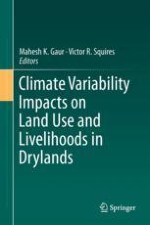
2018 | OriginalPaper | Buchkapitel
1. Geographic Extent and Characteristics of the World’s Arid Zones and Their Peoples
verfasst von : Mahesh K. Gaur, Victor R. Squires
Erschienen in: Climate Variability Impacts on Land Use and Livelihoods in Drylands
Aktivieren Sie unsere intelligente Suche, um passende Fachinhalte oder Patente zu finden.
Wählen Sie Textabschnitte aus um mit Künstlicher Intelligenz passenden Patente zu finden. powered by
Markieren Sie Textabschnitte, um KI-gestützt weitere passende Inhalte zu finden. powered by